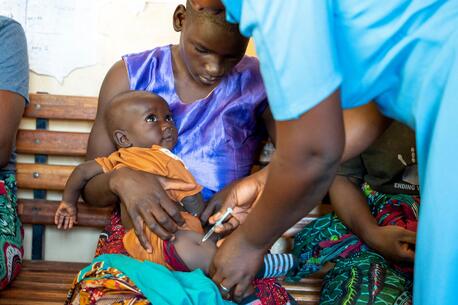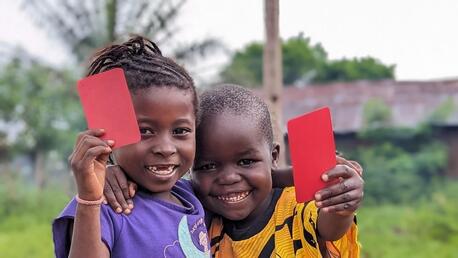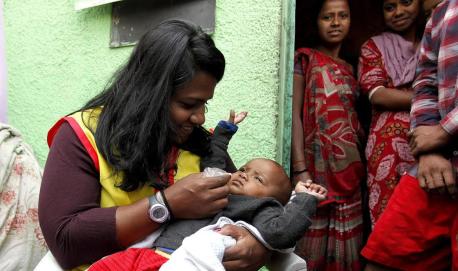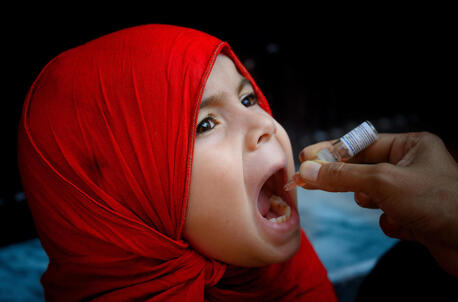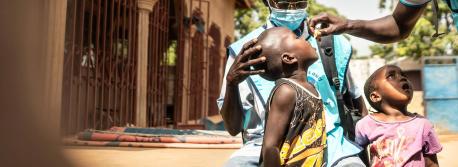
Every Child
Protected from Deadly Diseases
Vaccines save lives. UNICEF works with partners to make sure all children have access to routine immunizations.
Immunization: a global success story
Immunization — a pillar of UNICEF's global mission for children — is considered one of the most successful and cost-effective health interventions in human history.
Thanks to vaccination campaigns and related programs spearheaded by UNICEF and partners, polio is on the verge of being eradicated. All but 11 countries have eliminated maternal and neonatal tetanus.
As the largest single vaccine buyer in the world, UNICEF has helped reach more than 760 million children with lifesaving vaccines since 2000, preventing more than 13 million deaths.
With UNICEF leading procurement and distribution of COVID-19 vaccines during the pandemic, 1.99 billion COVID-19 vaccine doses were shipped to 146 primarily low- and middle-income countries.
Getting children vaccinated takes teamwork
The success of UNICEF's global immunization efforts would not be possible without teamwork: without doctors, nurses, scientists, parents, educators, governments, civil society groups and other partners coming together to get shots into the smallest arms.
There are still gaps to fill. Not every child gets fully vaccinated on schedule and as recommended by the World Health Organization. Conflict, displacement and poverty can impede access, leaving tens of millions of children around the world unprotected against preventable diseases like measles, whooping cough and pneumonia.
Vaccine hesitancy — fueled by vaccine myths and misinformation — is another barrier that UNICEF and partners counter through public education campaigns and with help from community mobilizers.
When vaccination rates drop, the risks of deadly disease outbreaks go up
The COVID-19 pandemic widely disrupted vaccination efforts — among other critical services for children — sharply increasing the number of children who missed out on routine immunization. And when immunization coverage drops, diseases that were previously under control can come back.
Through catch-up campaigns and other acceleration efforts, vaccination rates have started to rebound. But there are still millions of "zero dose" kids out there, kids who have never received a single vaccination.
Immunization provides a foundation for good health at the start of life and puts children on a path toward a healthier, more productive future.
Learn more about efforts by UNICEF and its partners to improve immunization rates globally.
UNICEF won’t stop protecting children. A contribution of $51 is enough to protect 50 children from measles. Donate today.
